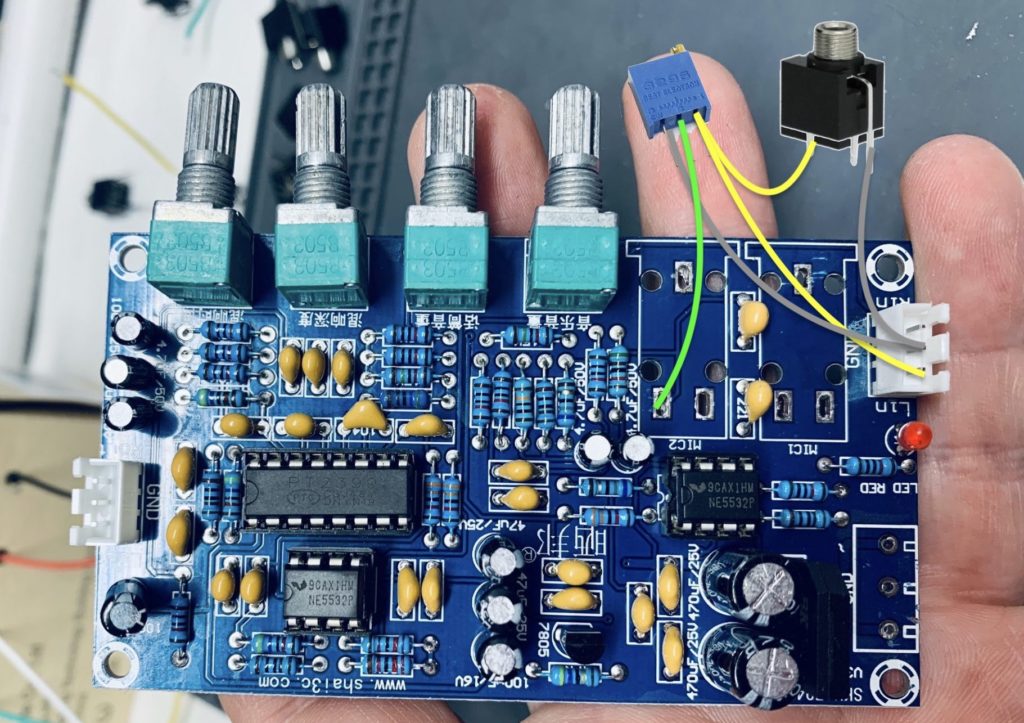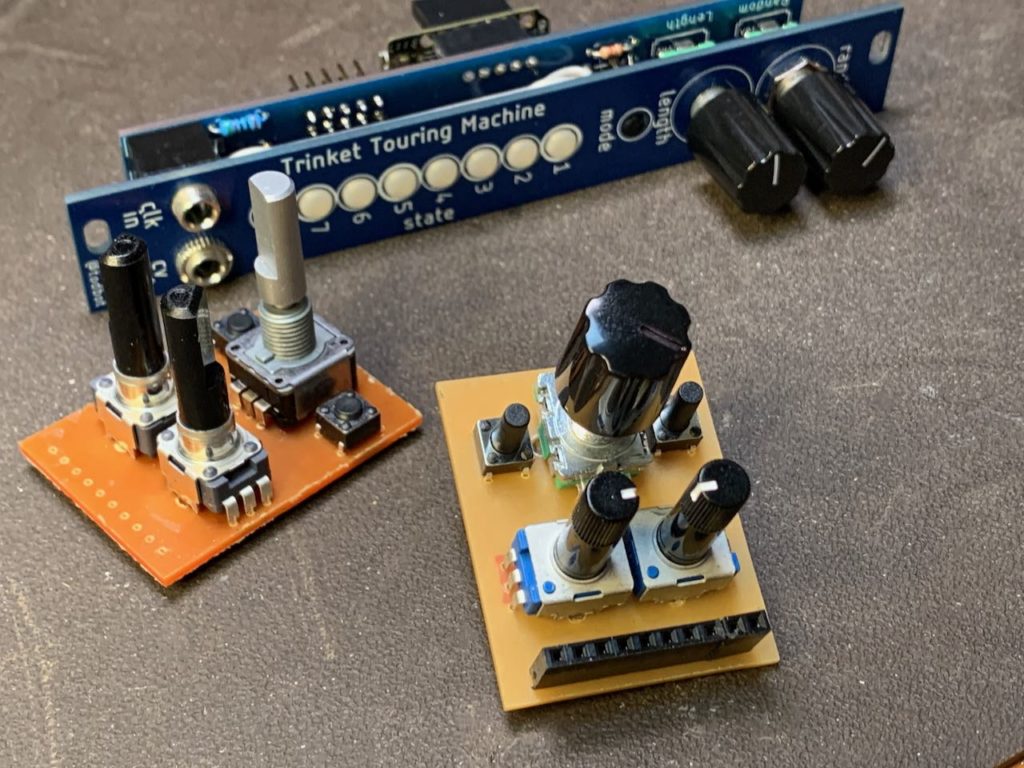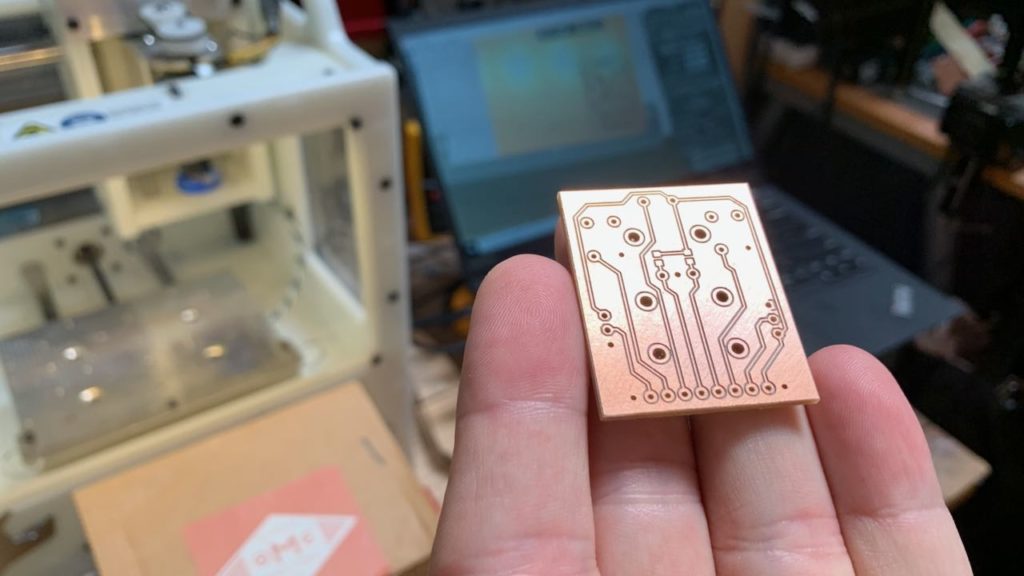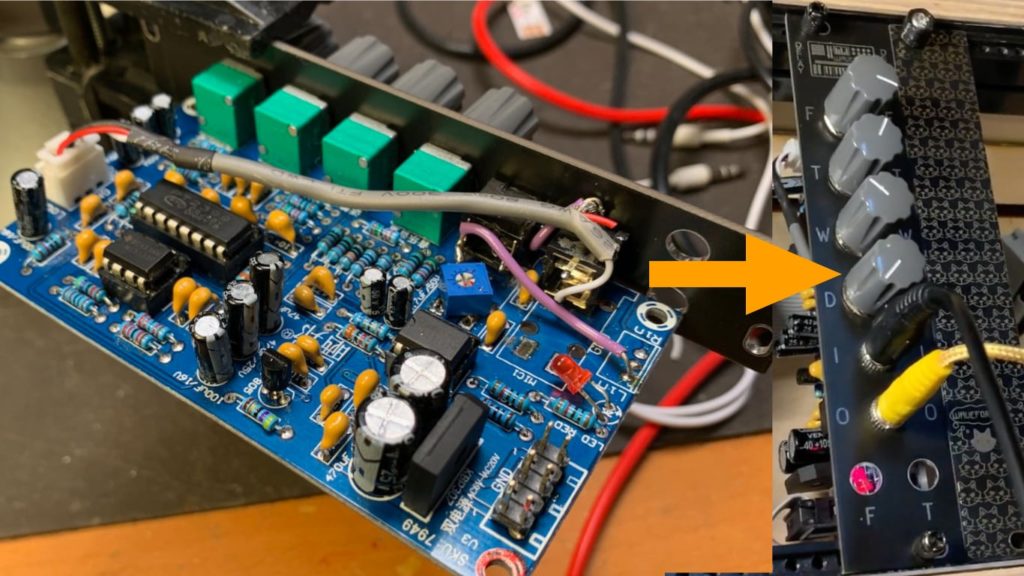
I’ve not been working on my Touring Machine Eurorack modular synth module, but I have been hacking a bit in that space. Back in 2019 John Park and I saw the Waveform Magazine DIY PT2399 delay module article. I got the parts and half-assembled mine, but the build guide was pretty vague in some areas so I just left it. This week I picked it up again and got it working!
The PT2399 chip is a weird little beast but is very cheap for a delay unit. The ebay listing for a fully-built PCB with preamps and jacks is <$9 (and forms the basis for the Waveform module).
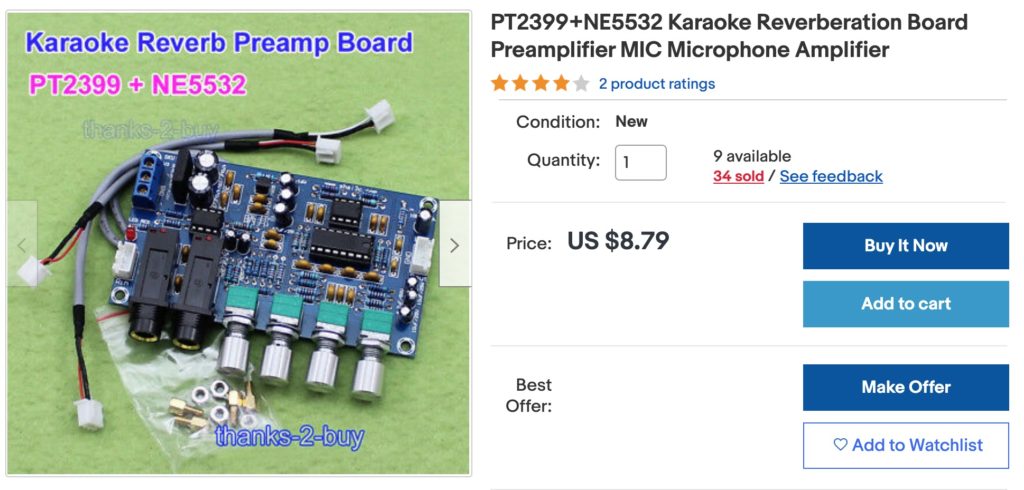
Some quick hacks on it and it turns into a usable Eurorack delay module that’s also noisy and distorty, which can be fun. Here’s a little demo video of it in action:
Also to make it more usable with Eurorack-level audio signals, I added a 10k trimpot to the input jack, before the “mic2” input, kind of like the pic below. It provides you with a much more usable range on the “wet” knob before it distorts.
